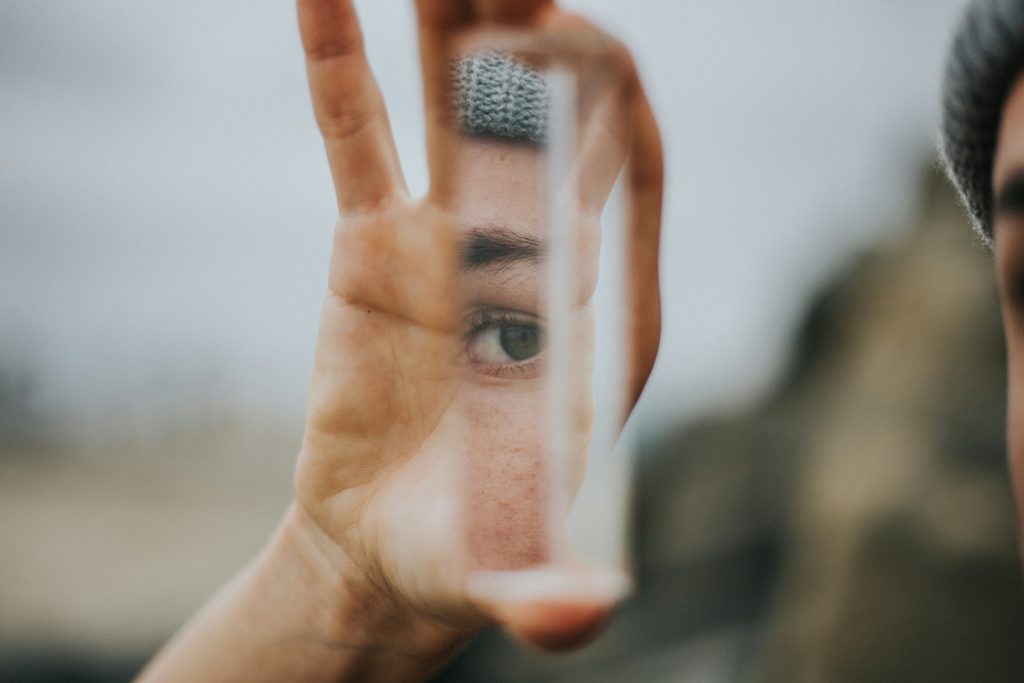
Within the UK, younger folks (YP) who’re scuffling with moderate-to-severe psychological well being signs are sometimes referred to Baby and Adolescent Psychological Well being Providers (CAMHS), that are specialist companies inside the NHS designed to assist YP with emotional, behavioural, and psychological well being difficulties.
Nonetheless, it’s well-known that the demand for CAMHS far outstrips what the service is at present capable of present, on account of points like low assets and underfunding. Actually, it’s beforehand been reported that YP might have to attend for as much as 27 weeks earlier than being seen for an preliminary evaluation (Stafford et al., 2020). Nonetheless, this examine was performed earlier than the COVID-19 pandemic, and since then, reported psychological well being issues in YP has solely elevated.
As I’m certain we’re all conscious, the video-based social media platform TikTok may be very in style with YP and is more and more getting used to seek for and share psychological well being info. It’s maybe no shock then, that the CAMHS hashtag (#camhs) has been seen greater than 730 million occasions (as of November 2023), or {that a} earlier quantitative examine discovered that 27/100 movies portrayed a damaging notion of CAMHS (Chadee & Evans, 2021). To discover this additional, Foster et al. (2024) performed a qualitative examine to raised perceive how CAMHS is perceived by YP via TikTok.

Younger persons are more and more utilizing social media to seek for and share psychological well being info. TikTok looks like a very in style app for sharing lived expertise, together with experiences of CAMHS.
Strategies
The authors created a TikTok account for analysis functions and used an incognito browser to generate a pattern of 100 movies from the #camhs hashtag. The primary 100 movies that appeared that met the inclusion standards (downloadable, involving somebody talking to the digicam, content material explicitly associated to CAMHS) have been included. Though it was not potential to establish particular demographic particulars, the authors famous video size, date of add, caption, perceived gender of creator, and the variety of views, likes, and feedback. Knowledge was analysed via inductive framework thematic evaluation (TA).
Moreover, 5 younger co-researchers aged 15–17-years-old have been concerned within the evaluation and interpretation of the information on this examine, 4 of whom actively used TikTok.
Outcomes
The 100 sampled #camhs movies averaged 17 seconds lengthy (SD = 16.7) and have been principally posted in 2021, with a mean of 226,383 views (SD = 567,077), 46,454 likes (SD = 139,237) and 587 feedback (SD = 11,199). The video creators have been predominantly White feminine adolescents.
Inductive framework TA generated 4 major themes.
Theme 1: CAMHS might be irritating and unhelpful, however generally life-saving
- Younger folks (YP) displayed emotions of frustration, anger and helplessness at not receiving the assist from CAMHS that they initially anticipated, notably given how lengthy the ready lists have been.
- YP have been particularly essential over generic coping methods provided throughout occasions of disaster, in addition to hurt minimisation practices, like respiratory workout routines or rest actions.
- Lower than 10% of movies mentioned constructive experiences of CAMHS, the place YP felt listened to and meaningfully concerned of their care.
- General, YP perceived clinicians to care extra about organisational procedures than offering them the care they want.
All CAMHS did was put me on a ready checklist.
Theme 2: YP can really feel their misery is invalidated by CAMHS
- YP regularly reported having their emotions and experiences dismissed and invalidated by CAMHS clinicians, with medical coaching and scientific data prioritised over lived expertise.
- YP highlighted how troublesome it was to obtain a proper prognosis via CAMHS, and felt phrases like “low temper” undermined the severity of what they have been experiencing, alongside ideas that their emotions have been associated to hormones, college, or friendships.
You might need attended a one-hour lecture on my specific situation, however the truth that I’ve been dwelling with it for my complete life, absolutely I do know extra about it than you?
Theme 3: CAMHS makes YP really feel answerable for their misery
- YP felt that CAMHS made them answerable for their misery, together with suppressing their feelings in order that they don’t upset these round them, and demonstrating that their misery is extreme sufficient to obtain assist.
- YP perceived that they’d solely obtain assist in the event that they have been at imminent danger of suicide, and that anything was seen as much less.
- A number of movies additionally shared service customers returning to CAMHS as adults to enhance the service for different YP.
[CAMHS psychiatrist] advised me they received’t assist me with my a0r3x€ıa as a result of my weight isn’t low sufficient.
Theme 4: YP might not really feel CAMHS professionals are reliable
- YP perceived CAMHS clinicians as untrustworthy and inauthentic, particularly in relation to affected person confidentiality; YP felt like clinicians would say one factor to them, and would then go behind their again to reveal it to their mother and father.
- On this means, CAMHS was represented as an area the place YP should reasonable what they are saying, for danger of others discovering out.
‘We do care about you’, ‘then why was I dis-charged throughout a disaster?’

Evaluation of 100 #camhs movies on TikTok highlighted that younger folks predominantly held damaging views in the direction of the service, feeling annoyed and helpless from not receiving the assist they wished and perceiving that medical data was prioritised over lived expertise.
Conclusions
This examine by Foster et al. (2024) highlights the other ways during which CAMHS is perceived and skilled by YP, as represented in TikTok movies. The authors point out that the 4 themes collectively
symbolize CAMHS as an area the place younger folks occupy a disempowered, subjugated place; an area during which they’re ‘executed to’, somewhat than ‘executed with’.
That is the other form of surroundings that many healthcare professionals hope to foster, and highlights an pressing space for additional investigation and intervention.

Younger folks additionally posted movies that shared their constructive experiences of CAMHS, the place they felt listened to and meaningfully concerned of their remedy. In some circumstances, CAMHS was skilled as lifesaving.
Strengths and limitations
The best energy of this paper lies in the involvement of younger co-researchers within the evaluation and interpretation of the information for this examine. As highlighted in a earlier Psychological Elf weblog that I co-wrote, there are numerous advantages for researchers and YP in meaningfully involving younger co-researchers in psychological research, together with constructing relationships with friends, creating expertise, and higher translation of analysis into follow. It’s nice to see this in follow, and to see such a structured method to coproduction – however it may have probably been even higher in the event that they have been named (or had been given the chance to be named) on the paper itself.
Nonetheless, there are some limitations that should be thought-about:
- As a consequence of extracting knowledge from TikTok, it was not potential for the researchers to find out the precise traits of the video creators, which means it’s troublesome to know the way consultant these movies are of YP’s experiences of CAMHS. It will be attention-grabbing to see a follow-up examine the place TikTok customers in #camhs are invited to finish a qualitative survey about their experiences, enabling the gathering of demographic knowledge and probably a deeper understanding of why they maintain these views.
- There may be a variety of attain, likes and feedback throughout the 100 sampled movies. This could possibly be thought-about a energy, because it demonstrates range of content material and engagement, however it makes it troublesome to know if the sampled movies symbolize what YP really view, inflicting points with validity.
- It was unclear from the paper if the sampled movies have been from informal TikTok customers or content material creators. When contemplating the affect of those movies on YP’s perceptions of CAMHS, this looks like an vital space to report on.
- Whereas the authors point out reflexivity, it stays surface-level and tells readers little about how the researchers’ personal values, beliefs, and experiences might have contributed and influenced this examine.
- At no level do the authors explicitly spotlight the strengths and limitations of their very own examine. Maybe this is a matter associated to the journal phrase depend, however it once more exhibits an absence of reflection and criticality relating to their very own work. I’m admittedly shocked that the journal didn’t question this previous to publication.

The best energy of this paper lies within the involvement of younger co-researchers. Nonetheless, there’s additionally little reflexivity, regardless of it being talked about; extra of this may strengthen the paper.
Implications for follow
I wished to jot down this weblog as a result of I used to be out and in of CAMHS for 8 years once I was a young person, and a few of my very own difficult emotions in regards to the service are represented on this paper. Now being in a privileged place the place I’ve labored with and been supervised by CAMHS clinicians, I can see either side of the coin and know there isn’t a fast repair to the problems highlighted on this paper.
Personally, I’m wondering if it could possibly be useful for clinicians to ask YP in assessments about whether or not they have any preconceived views or opinions about CAMHS, both from their very own prior experiences, via mates, or social media, and to work with YP to establish what they will each do to beat this. As a young person, my response would have been one thing like “Maintain me within the loop. Let me know if issues are altering. Ask me if I really feel like one thing is working – and if it isn’t, let’s strive one thing else”. I might by no means underestimate how highly effective it may be to provide YP a component of management over their care, even when it’s simply with the ability to let you know what isn’t working for them.
To me, this paper additionally highlights how vital it’s to signpost and refer YP to companies outdoors of CAMHS – for instance, Psychological Well being Assist Groups (MHSTs) in faculties, and Kids and YP’s Wellbeing Practitioners (CWP) in group, charity, and first care settings. Researchers and practitioners must prioritise getting YP the assistance they anticipate as rapidly as potential, and if CAMHS can’t meet that want, we have to get artistic. It additionally makes me consider the potential for single-session interventions, and the assist that may be supplied to YP this manner (see Maria and Georgia’s Psychological Elf weblog to study extra!)
Lastly, work additionally must be executed to enhance the general public picture of CAMHS. Based mostly on earlier analysis, we all know that expectations might be vital for remedy outcomes and engagement (Watsford et al., 2013); it’s subsequently an issue if YP anticipate to obtain poor remedy in CAMHS or in the event that they anticipate that their wants won’t be met. We have to improve YP’s confidence in CAMHS, and the way that is executed requires enter from all concerned stakeholders.
Equally, it should additionally really feel exhausting and disheartening for clinicians who’re doing one of the best they will with the assets they’ve, but really feel like their work is under-appreciated or not making a distinction. We all know the chance elements and penalties of burnout amongst psychological well being professionals (O’Connor et al., 2018) so we actually want to think about the way to greatest assist CAMHS practitioners whereas working in a service that’s in nice demand and under-funded.

Based mostly on research like this, it appears important that we contemplate the way to enhance younger folks’s confidence in CAMHS, while additionally guaranteeing that CAMHS practitioners are receiving the required assist to proceed working.
Assertion of pursuits
None.
Hyperlinks
Main paper
Foster, M., Frith, H., & John, M. (2024). ‘I’m nonetheless su! c! dal whenever you’re executed with the paperwork’: an inductive framework thematic evaluation of# camhs on TikTok. Journal of Baby Psychology and Psychiatry, 65(10), 1258-1269.
Different references
Loades, M., & Kemp, G. (2022). Only one shot at it: single session interventions for adolescent melancholy. The Psychological Elf.
Luximon, M., & Higson-Sweeney, N. (2023). What are the advantages of together with younger folks in psychological well being analysis? Findings from interviews performed by co-researchers. The Psychological Elf.
O’Connor, Okay., Neff, D. M., & Pitman, S. (2018). Burnout in psychological well being professionals: A scientific assessment and meta-analysis of prevalence and determinants. European Psychiatry, 53, 74-99.
Stafford, J., Aurelio, M., & Shah, A. (2020). Bettering entry and movement inside Baby and Adolescent Psychological Well being Providers: A collaborative studying system method. BMJ Open High quality, 9(4), e000832.
Watsford, C., Rickwood, D., & Vanags, T. (2013). Exploring younger folks’s expectations of a youth psychological well being care service. Early Intervention in Psychiatry, 7(2), 131-137.
Photograph credit

Within the UK, younger folks (YP) who’re scuffling with moderate-to-severe psychological well being signs are sometimes referred to Baby and Adolescent Psychological Well being Providers (CAMHS), that are specialist companies inside the NHS designed to assist YP with emotional, behavioural, and psychological well being difficulties.
Nonetheless, it’s well-known that the demand for CAMHS far outstrips what the service is at present capable of present, on account of points like low assets and underfunding. Actually, it’s beforehand been reported that YP might have to attend for as much as 27 weeks earlier than being seen for an preliminary evaluation (Stafford et al., 2020). Nonetheless, this examine was performed earlier than the COVID-19 pandemic, and since then, reported psychological well being issues in YP has solely elevated.
As I’m certain we’re all conscious, the video-based social media platform TikTok may be very in style with YP and is more and more getting used to seek for and share psychological well being info. It’s maybe no shock then, that the CAMHS hashtag (#camhs) has been seen greater than 730 million occasions (as of November 2023), or {that a} earlier quantitative examine discovered that 27/100 movies portrayed a damaging notion of CAMHS (Chadee & Evans, 2021). To discover this additional, Foster et al. (2024) performed a qualitative examine to raised perceive how CAMHS is perceived by YP via TikTok.

Younger persons are more and more utilizing social media to seek for and share psychological well being info. TikTok looks like a very in style app for sharing lived expertise, together with experiences of CAMHS.
Strategies
The authors created a TikTok account for analysis functions and used an incognito browser to generate a pattern of 100 movies from the #camhs hashtag. The primary 100 movies that appeared that met the inclusion standards (downloadable, involving somebody talking to the digicam, content material explicitly associated to CAMHS) have been included. Though it was not potential to establish particular demographic particulars, the authors famous video size, date of add, caption, perceived gender of creator, and the variety of views, likes, and feedback. Knowledge was analysed via inductive framework thematic evaluation (TA).
Moreover, 5 younger co-researchers aged 15–17-years-old have been concerned within the evaluation and interpretation of the information on this examine, 4 of whom actively used TikTok.
Outcomes
The 100 sampled #camhs movies averaged 17 seconds lengthy (SD = 16.7) and have been principally posted in 2021, with a mean of 226,383 views (SD = 567,077), 46,454 likes (SD = 139,237) and 587 feedback (SD = 11,199). The video creators have been predominantly White feminine adolescents.
Inductive framework TA generated 4 major themes.
Theme 1: CAMHS might be irritating and unhelpful, however generally life-saving
- Younger folks (YP) displayed emotions of frustration, anger and helplessness at not receiving the assist from CAMHS that they initially anticipated, notably given how lengthy the ready lists have been.
- YP have been particularly essential over generic coping methods provided throughout occasions of disaster, in addition to hurt minimisation practices, like respiratory workout routines or rest actions.
- Lower than 10% of movies mentioned constructive experiences of CAMHS, the place YP felt listened to and meaningfully concerned of their care.
- General, YP perceived clinicians to care extra about organisational procedures than offering them the care they want.
All CAMHS did was put me on a ready checklist.
Theme 2: YP can really feel their misery is invalidated by CAMHS
- YP regularly reported having their emotions and experiences dismissed and invalidated by CAMHS clinicians, with medical coaching and scientific data prioritised over lived expertise.
- YP highlighted how troublesome it was to obtain a proper prognosis via CAMHS, and felt phrases like “low temper” undermined the severity of what they have been experiencing, alongside ideas that their emotions have been associated to hormones, college, or friendships.
You might need attended a one-hour lecture on my specific situation, however the truth that I’ve been dwelling with it for my complete life, absolutely I do know extra about it than you?
Theme 3: CAMHS makes YP really feel answerable for their misery
- YP felt that CAMHS made them answerable for their misery, together with suppressing their feelings in order that they don’t upset these round them, and demonstrating that their misery is extreme sufficient to obtain assist.
- YP perceived that they’d solely obtain assist in the event that they have been at imminent danger of suicide, and that anything was seen as much less.
- A number of movies additionally shared service customers returning to CAMHS as adults to enhance the service for different YP.
[CAMHS psychiatrist] advised me they received’t assist me with my a0r3x€ıa as a result of my weight isn’t low sufficient.
Theme 4: YP might not really feel CAMHS professionals are reliable
- YP perceived CAMHS clinicians as untrustworthy and inauthentic, particularly in relation to affected person confidentiality; YP felt like clinicians would say one factor to them, and would then go behind their again to reveal it to their mother and father.
- On this means, CAMHS was represented as an area the place YP should reasonable what they are saying, for danger of others discovering out.
‘We do care about you’, ‘then why was I dis-charged throughout a disaster?’

Evaluation of 100 #camhs movies on TikTok highlighted that younger folks predominantly held damaging views in the direction of the service, feeling annoyed and helpless from not receiving the assist they wished and perceiving that medical data was prioritised over lived expertise.
Conclusions
This examine by Foster et al. (2024) highlights the other ways during which CAMHS is perceived and skilled by YP, as represented in TikTok movies. The authors point out that the 4 themes collectively
symbolize CAMHS as an area the place younger folks occupy a disempowered, subjugated place; an area during which they’re ‘executed to’, somewhat than ‘executed with’.
That is the other form of surroundings that many healthcare professionals hope to foster, and highlights an pressing space for additional investigation and intervention.

Younger folks additionally posted movies that shared their constructive experiences of CAMHS, the place they felt listened to and meaningfully concerned of their remedy. In some circumstances, CAMHS was skilled as lifesaving.
Strengths and limitations
The best energy of this paper lies in the involvement of younger co-researchers within the evaluation and interpretation of the information for this examine. As highlighted in a earlier Psychological Elf weblog that I co-wrote, there are numerous advantages for researchers and YP in meaningfully involving younger co-researchers in psychological research, together with constructing relationships with friends, creating expertise, and higher translation of analysis into follow. It’s nice to see this in follow, and to see such a structured method to coproduction – however it may have probably been even higher in the event that they have been named (or had been given the chance to be named) on the paper itself.
Nonetheless, there are some limitations that should be thought-about:
- As a consequence of extracting knowledge from TikTok, it was not potential for the researchers to find out the precise traits of the video creators, which means it’s troublesome to know the way consultant these movies are of YP’s experiences of CAMHS. It will be attention-grabbing to see a follow-up examine the place TikTok customers in #camhs are invited to finish a qualitative survey about their experiences, enabling the gathering of demographic knowledge and probably a deeper understanding of why they maintain these views.
- There may be a variety of attain, likes and feedback throughout the 100 sampled movies. This could possibly be thought-about a energy, because it demonstrates range of content material and engagement, however it makes it troublesome to know if the sampled movies symbolize what YP really view, inflicting points with validity.
- It was unclear from the paper if the sampled movies have been from informal TikTok customers or content material creators. When contemplating the affect of those movies on YP’s perceptions of CAMHS, this looks like an vital space to report on.
- Whereas the authors point out reflexivity, it stays surface-level and tells readers little about how the researchers’ personal values, beliefs, and experiences might have contributed and influenced this examine.
- At no level do the authors explicitly spotlight the strengths and limitations of their very own examine. Maybe this is a matter associated to the journal phrase depend, however it once more exhibits an absence of reflection and criticality relating to their very own work. I’m admittedly shocked that the journal didn’t question this previous to publication.

The best energy of this paper lies within the involvement of younger co-researchers. Nonetheless, there’s additionally little reflexivity, regardless of it being talked about; extra of this may strengthen the paper.
Implications for follow
I wished to jot down this weblog as a result of I used to be out and in of CAMHS for 8 years once I was a young person, and a few of my very own difficult emotions in regards to the service are represented on this paper. Now being in a privileged place the place I’ve labored with and been supervised by CAMHS clinicians, I can see either side of the coin and know there isn’t a fast repair to the problems highlighted on this paper.
Personally, I’m wondering if it could possibly be useful for clinicians to ask YP in assessments about whether or not they have any preconceived views or opinions about CAMHS, both from their very own prior experiences, via mates, or social media, and to work with YP to establish what they will each do to beat this. As a young person, my response would have been one thing like “Maintain me within the loop. Let me know if issues are altering. Ask me if I really feel like one thing is working – and if it isn’t, let’s strive one thing else”. I might by no means underestimate how highly effective it may be to provide YP a component of management over their care, even when it’s simply with the ability to let you know what isn’t working for them.
To me, this paper additionally highlights how vital it’s to signpost and refer YP to companies outdoors of CAMHS – for instance, Psychological Well being Assist Groups (MHSTs) in faculties, and Kids and YP’s Wellbeing Practitioners (CWP) in group, charity, and first care settings. Researchers and practitioners must prioritise getting YP the assistance they anticipate as rapidly as potential, and if CAMHS can’t meet that want, we have to get artistic. It additionally makes me consider the potential for single-session interventions, and the assist that may be supplied to YP this manner (see Maria and Georgia’s Psychological Elf weblog to study extra!)
Lastly, work additionally must be executed to enhance the general public picture of CAMHS. Based mostly on earlier analysis, we all know that expectations might be vital for remedy outcomes and engagement (Watsford et al., 2013); it’s subsequently an issue if YP anticipate to obtain poor remedy in CAMHS or in the event that they anticipate that their wants won’t be met. We have to improve YP’s confidence in CAMHS, and the way that is executed requires enter from all concerned stakeholders.
Equally, it should additionally really feel exhausting and disheartening for clinicians who’re doing one of the best they will with the assets they’ve, but really feel like their work is under-appreciated or not making a distinction. We all know the chance elements and penalties of burnout amongst psychological well being professionals (O’Connor et al., 2018) so we actually want to think about the way to greatest assist CAMHS practitioners whereas working in a service that’s in nice demand and under-funded.

Based mostly on research like this, it appears important that we contemplate the way to enhance younger folks’s confidence in CAMHS, while additionally guaranteeing that CAMHS practitioners are receiving the required assist to proceed working.
Assertion of pursuits
None.
Hyperlinks
Main paper
Foster, M., Frith, H., & John, M. (2024). ‘I’m nonetheless su! c! dal whenever you’re executed with the paperwork’: an inductive framework thematic evaluation of# camhs on TikTok. Journal of Baby Psychology and Psychiatry, 65(10), 1258-1269.
Different references
Loades, M., & Kemp, G. (2022). Only one shot at it: single session interventions for adolescent melancholy. The Psychological Elf.
Luximon, M., & Higson-Sweeney, N. (2023). What are the advantages of together with younger folks in psychological well being analysis? Findings from interviews performed by co-researchers. The Psychological Elf.
O’Connor, Okay., Neff, D. M., & Pitman, S. (2018). Burnout in psychological well being professionals: A scientific assessment and meta-analysis of prevalence and determinants. European Psychiatry, 53, 74-99.
Stafford, J., Aurelio, M., & Shah, A. (2020). Bettering entry and movement inside Baby and Adolescent Psychological Well being Providers: A collaborative studying system method. BMJ Open High quality, 9(4), e000832.
Watsford, C., Rickwood, D., & Vanags, T. (2013). Exploring younger folks’s expectations of a youth psychological well being care service. Early Intervention in Psychiatry, 7(2), 131-137.












